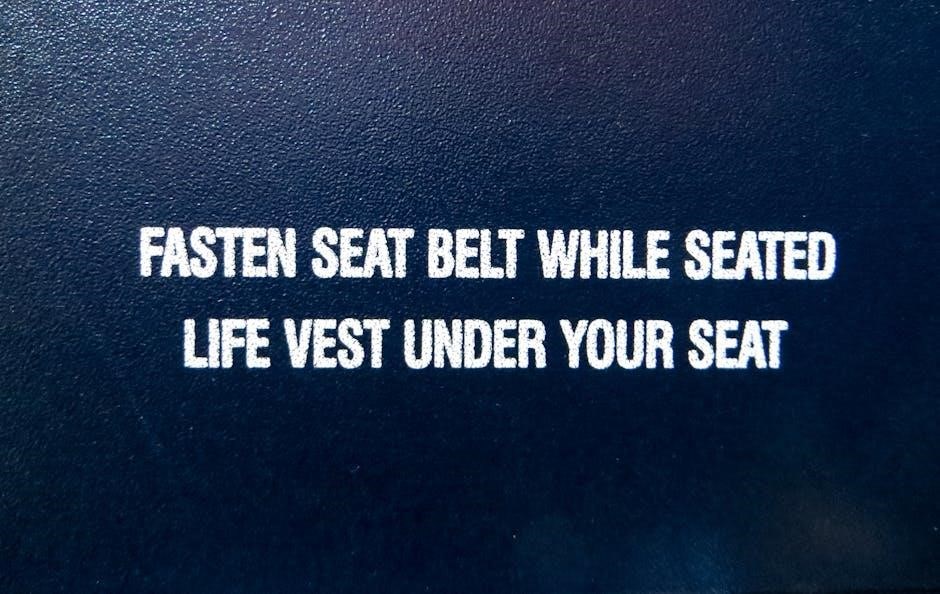The CT-1065 form is for pass-through entities, including partnerships and S corporations, to report income, deductions, and credits. It includes updates to Schedules K-2 and K-3 for 2022, mandatory filing requirements, and transition details to the Connecticut Composite Income Tax Return. The instructions provide step-by-step guidance for accurate filing and compliance with state tax regulations.
Overview of the Connecticut Pass-Through Entity Tax Return
The Connecticut Pass-Through Entity Tax Return (Form CT-1065) is used by partnerships, S corporations, and other pass-through entities to report income, deductions, and credits. It ensures compliance with state tax laws, including the Pass-Through Entity Tax and the Composite Income Tax. The form requires entities to detail income derived from Connecticut sources and allocate shares among members. Schedules K-2 and K-3 are essential for reporting international and other specific items. For tax year 2022, mandatory filing applies to entities conducting business in Connecticut, regardless of income amount. The return also includes updates to reflect state tax law changes and filing requirements.

Who Must File Form CT-1065
Pass-through entities, including partnerships, S corporations, and REMICs, must file Form CT-1065 if they conduct business in Connecticut or derive income from Connecticut sources.
Eligibility Criteria for Pass-Through Entities
Pass-through entities, such as partnerships, S corporations, and limited liability companies (LLCs), must meet specific criteria to file Form CT-1065. These entities are required to file if they conduct business in Connecticut or derive income from Connecticut sources. The eligibility criteria include entities with Connecticut-sourced income, regardless of the amount, and those subject to the Connecticut pass-through entity tax. Additionally, entities with members who are nonresident individuals or other pass-through entities may need to file. The Connecticut Department of Revenue Services (DRS) provides detailed guidelines to determine eligibility and ensure compliance with state tax regulations.
Partnerships and REMICs Filing Requirements
Partnerships and Real Estate Mortgage Investment Conduits (REMICs) must file Form CT-1065 if they have Connecticut-sourced income or conduct business in the state. Partnerships are required to report each partner’s share of income, deductions, and credits on Schedule K-1. REMICs must also comply with specific reporting requirements for their investors. Both entities must adhere to the Connecticut pass-through entity tax regulations, ensuring accurate reporting and timely filing. The Connecticut DRS provides detailed instructions to guide partnerships and REMICs through the filing process, emphasizing compliance with state tax laws and proper documentation submission.

How to Complete Form CT-1065
Complete Form CT-1065 by following the order of schedules and attachments, ensuring accuracy in reporting income, deductions, and credits. Review key fields and lines carefully to comply with filing requirements;
Order of Completing Schedules and Attachments
Begin with Form CT-1065, ensuring all entity information is accurate. Complete Schedule K-1 for each member, detailing their share of income, deductions, and credits. Attach Schedule K-2 and K-3 if required, ensuring compliance with federal and state reporting standards. Next, complete Schedule A for apportionment and Schedule B for credits. Attach any additional schedules or forms specific to the entity’s situation. Include supplemental attachments, such as federal returns or amended forms, as needed. Finally, review the entire return for consistency and accuracy before submission to avoid penalties or delays in processing.
Key Fields and Lines to Focus On
Ensure accuracy in reporting total income, deductions, and credits on Line 1. Verify estimated tax payments on Line 5, including extensions and carryover credits. Complete Schedule K-1 for each member, detailing their share of income and deductions. Review Schedule K-2 and K-3 for international and foreign items, if applicable. Accurately complete Schedule A for apportionment of income and Schedule B for credits. Ensure all federal adjustments are correctly reflected on Line 1. Double-check member information and allocations to avoid discrepancies. Verify the total tax liability and payments to ensure compliance with state requirements. Address any additional attachments or explanations as needed.

Understanding Schedules K-2 and K-3
Schedules K-2 and K-3 provide detailed partner-specific information for international tax items. They replace previous foreign tax reporting, ensuring compliance with IRS guidelines. Mandatory for certain entities, these schedules streamline foreign income and credit reporting, reducing filing complexity for pass-through entities.
What’s New in Schedules K-2 and K-3 for 2022
For tax year 2022, Schedules K-2 and K-3 introduced a new exception for filing and furnishing, reducing reporting requirements for certain pass-through entities. Additionally, these schedules replaced previous foreign tax reporting forms, streamlining international tax item disclosure. Partnerships and REMICs must now report foreign-source income, deductions, and credits with enhanced detail. The IRS updated guidelines to ensure compliance with international tax regulations, making these schedules mandatory for entities with foreign activities. Filers should refer to the revised instructions for specific exceptions and reporting criteria to avoid penalties and ensure accurate submissions.
Exceptions for Filing and Furnishing Schedules K-2 and K-3
Certain pass-through entities are exempt from filing and furnishing Schedules K-2 and K-3 for tax year 2022. These exceptions include entities with no foreign income, deductions, or credits, and those where all partners are domestic. Additionally, if a pass-through entity meets specific criteria, such as having only U.S. activities, it may be relieved from providing these schedules. However, exceptions must be reviewed annually as eligibility can change. Entities should consult the IRS guidelines to determine if they qualify for these exemptions and ensure compliance with all filing requirements. Proper documentation is essential to avoid penalties and ensure accurate reporting.
Payment and Estimated Tax Requirements
Pass-through entities must use Form CT-1065/CT-1120SI ES for estimated tax payments. Ensure accurate calculation of total payments, including lines 5a, 5b, and 5c. Mandatory filing applies to all pass-through entities conducting business in Connecticut;
Calculating Total Payments and Credits
To calculate total payments and credits, start with estimated tax payments made during the year (Line 5a). Add any extension payments (Line 5b) and overpayments from the previous year applied to the current year (Line 5c). Sum these amounts on Line 5 to determine total payments. Pass-through entities must ensure accuracy in reporting to avoid penalties. Mandatory filing applies to all entities conducting business in Connecticut, regardless of income amount. Proper calculation ensures compliance with state tax regulations and avoids potential penalties for underpayment or late filing.
Using Form CT-1065/CT-1120SI ES for Estimated Payments
Form CT-1065/CT-1120SI ES is used for making estimated Connecticut income tax payments for pass-through entities. Payments are due quarterly, with deadlines on April 15, June 15, September 15, and January 15 of the following year. Use Line 5a to report total estimated payments made during the year. If an extension was filed, include payments made with Form CT-1065/CT-1120SI EXT on Line 5b. Overpayments from the previous year applied to the current year are reported on Line 5c. Timely payments help avoid penalties and ensure compliance with Connecticut tax regulations. Mandatory filing applies to all pass-through entities conducting business in Connecticut.

Requesting an Extension
Use Form CT-1065/CT-1120SI EXT to request an extension for filing the Connecticut Pass-Through Entity Tax Return. The extension extends the filing deadline and time to furnish Schedule CT K-1.
Filing Form CT-1065/CT-1120SI EXT
Form CT-1065/CT-1120SI EXT is used to request an extension of time to file the Connecticut Pass-Through Entity Tax Return. Eligible pass-through entities must submit this form by the original due date of the return. The extension applies to both the filing of Form CT-1065/CT-1120SI and the furnishing of Schedule CT K-1 to members. The form must be completed accurately, including the payment of any extension-related taxes. It is essential to file the form electronically or by mail, depending on the entity’s requirements. The Connecticut Department of Revenue Services (DRS) will only notify applicants if the extension request is denied.
Extension Payment Requirements
Pass-through entities requesting an extension must pay the estimated tax liability by the original due date of Form CT-1065/CT-1120SI. Use Form CT-1065/CT-1120SI ES to make extension payments. If the entity operates on a fiscal year, the extension and payment are due by the 15th day of the third month following the tax year end. Failure to pay the required amount may result in interest and penalties. The extension does not waive the requirement to pay taxes timely. Ensure accurate payment to avoid additional charges and maintain compliance with Connecticut tax regulations.
Amended Returns
Use Form 1065-X to correct errors on previously filed returns. Partnerships and REMICs must file this form for incorrect income, deductions, or other items.
When to File Form 1065-X
Form 1065-X is used to correct errors or omissions in a previously filed CT-1065 return. File it when adjustments are needed due to IRS changes, amended federal returns, or discovered errors. Submit Form 1065-X within the period allowed for filing an amended return, typically three years from the original filing deadline. Attach supporting documents, such as amended federal returns or IRS determinations, to explain corrections. Ensure accurate completion to avoid further penalties or delays in processing the amended return.
Correcting Previously Filed Returns
To correct errors or omissions in a previously filed CT-1065 return, use Form 1065-X. This form allows partnerships or REMICs to amend income, deductions, or credits. File Form 1065-X if adjustments are made due to IRS changes, amended federal returns, or discovered errors. Attach a copy of the federal amended return or IRS determination to support corrections. Ensure all changes are clearly explained and applicable schedules are updated. The amended return must include the correct Schedule K-1 for each affected member. Failure to properly correct errors may result in penalties or delays in processing. Always sign and date the form before submission.
Interest and Penalties
Late filing or underpayment of taxes may result in interest and penalties. A $50 penalty applies for late filing if no tax is due. Consult the instructions for calculation details.
Consequences of Late Filing or Underpayment
Late filing of Form CT-1065 or underpayment of taxes can result in penalties and interest. If no tax is due, a $50 penalty may be imposed for late filing. Interest accrues on unpaid taxes from the original due date. The Commissioner of Revenue Services may also impose additional penalties for noncompliance.
Underpayment of estimated taxes may lead to further penalties. Use Form CT-1065/CT-1120SI ES for estimated payments to avoid underpayment penalties. Late filing or underpayment can delay processing and lead to additional notices or audits. Ensure timely filing and payment to avoid these consequences.
Calculating Interest and Penalty Amounts
Interest and penalties are calculated based on unpaid taxes and late filing. Interest accrues from the original due date of the return. If no tax is due but the return is filed late, a $50 penalty may apply. For underpayment of estimated taxes, penalties are calculated using Form CT-1065/CT-1120SI ES. Late payment or underpayment of taxes will result in interest and penalties being added to the total amount due. The Commissioner of Revenue Services may impose additional penalties for noncompliance. Ensure accurate calculation and timely payment to avoid these charges.

Connecticut Composite Income Tax Return
The Connecticut Composite Income Tax Return is mandatory for pass-through entities conducting business in Connecticut. It replaced the Pass-Through Entity Tax, ensuring compliance with state tax regulations.
Transition from Pass-Through Entity Tax to Composite Income Tax
The Connecticut Composite Income Tax Return replaced the Pass-Through Entity Tax, streamlining reporting for pass-through entities. Mandatory for entities conducting business in Connecticut, it simplifies tax compliance. Key updates include revised filing requirements, ensuring accurate state tax reporting. This transition aligns with federal changes, enhancing transparency in income reporting. Entities must adhere to new guidelines, including Schedules K-2 and K-3, for proper compliance. The composite tax ensures uniformity, reducing administrative burdens while maintaining tax integrity. Proper documentation and timely filing are essential to avoid penalties.
Mandatory Filing for Pass-Through Entities
Pass-through entities, such as partnerships, S corporations, and limited liability companies, are required to file Form CT-1065/CT-1120SI if they conduct business in Connecticut or derive income from Connecticut sources. This mandate applies regardless of the entity’s income amount. The transition to the composite income tax ensures uniformity in reporting and compliance with state tax laws. Entities must adhere to filing deadlines and provide accurate documentation, including Schedules K-2 and K-3, to avoid penalties. Proper compliance with these requirements is essential for maintaining tax integrity and fulfilling legal obligations in Connecticut.
Additional Resources
Visit the Connecticut Department of Revenue Services (DRS) at portal.ct.gov/DRS for detailed guidance. Additionally, refer to IRS.gov/Form1065 for federal updates and instructions.
IRS Guidelines and Updates
The IRS provides essential guidance for completing Form CT-1065 through its official website at IRS.gov. For the 2022 tax year, the IRS introduced updates to Schedules K-2 and K-3, which are now required for pass-through entities. These schedules enhance reporting of international and foreign tax information. Additionally, the IRS offers detailed instructions for partnerships and S corporations, including rules for amended returns and extensions. Taxpayers can access the latest forms, instructions, and resources to ensure compliance with federal and state tax regulations. Regularly checking IRS.gov is recommended for the most current information.
Connecticut Department of Revenue Services (DRS) Resources
The Connecticut Department of Revenue Services (DRS) provides comprehensive resources for taxpayers filing Form CT-1065. Visit the official DRS portal at portal.ct.gov/DRS for access to forms, instructions, and updates. Taxpayers can download Form CT-1065/CT-1120SI, review guidance on pass-through entity taxes, and find information on Composite Income Tax Returns. The DRS also offers detailed instructions for completing Schedules K-2 and K-3, as well as resources for estimated tax payments and extensions. For specific assistance, refer to the DRS Pass-Through Entity Tax Information page, ensuring compliance with Connecticut tax regulations.




About the author